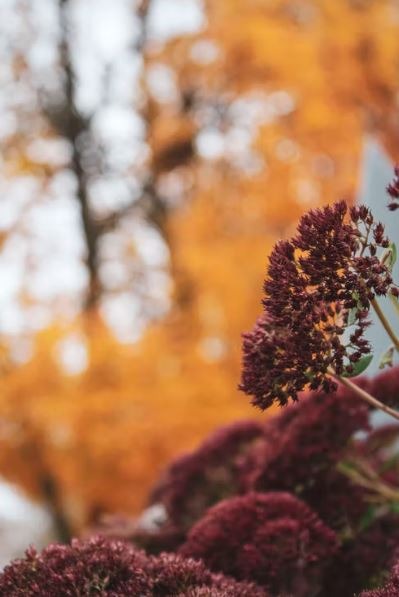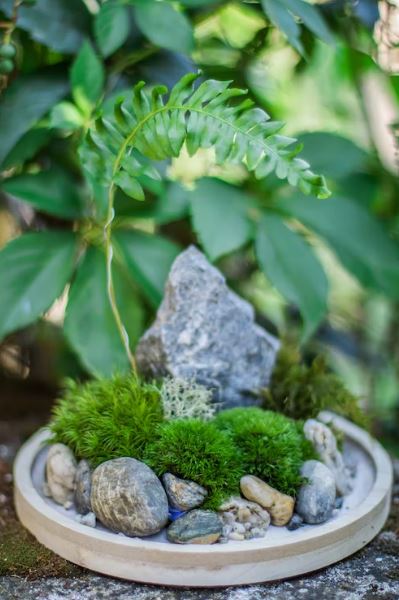What is Micro gardening?
Urban micro container gardening, also known as indoor gardening, is the practice of growing vegetables, herbs, roots, and tubers in constrained areas. These gardening areas could be balconies, tiny yards, patios, or rooftops, and they would use a variety of containers, such as wood pallets, plastic-lined wooden crates, used car tires, plastic buckets, trash cans, plastic buckets, and polypropylene bags.
Another choice is small-scale hydroponic systems. These include aquaponics, which involves growing plants directly in water, and aeroponics, which involves growing plants in hanging containers with little to no soil. What advantages do urban micro container gardens offer? They combine a horticultural production method with green technology appropriate for city dwellers. These include managing household waste and collecting rainwater. For your micro gardening, we also have the complete guide to gardening tools.
Tips for Micro Container Gardening
Micro gardening can be as easy and affordable or as complicated and expensive as you like, and it can work for just about anyone with a small space. In addition, find out what grows best in sandy soil. Observations by the U.N. According to data from the Food and Agricultural Organization, a well-tended 11-square-foot micro garden can yield up to 200 tomatoes per year, 36 heads of lettuce every 60 days, and 10 cabbages every 90 days, and an astounding 100 onions every 120 days.
A micro garden can be irrigated with more expensive drip irrigation systems, or rainwater can be collected and stored in a cistern by running off the roof’s eaves or through a network of gutters and pipes. An urban micro garden can grow a wide variety of vegetables, though some of them are unavoidably too big for tiny spaces. Growing some vegetables, like broccoli, which has a wide, bushy habit, may be beyond the realm of possibility, but you can certainly grow many vegetables that are dwarf-sized.
The Extra Dwarf Bok Choy
This Bok Choy is the cutest little vegetable you’ve ever seen. It’s also tasty and carefree. In as little as 30 days, crunch miniature heads are fully developed. They are used whole in stir-fries and soups as well as raw in salads. They have white petioles and dark-green leaves that only reach a height of 2 inches. Directly sow seeds in the garden in the early to mid-spring and once more in the late summer for harvests in the fall.
Arugula Plant
The ideal plant to choose for growing microgreens is arugula. You can have a harvestable crop of arugula microgreens in as little as 10 days, and it adds a zesty, slightly nutty flavor to salads and wraps. Arugula greens are a great choice if you want a lot of flavor from your microgreens because they can be spicy and occasionally slightly bitter. Arugula greens should be harvested when they are about two inches tall and have bright, open leaves.
Basil Plant
Basil microgreens are an excellent way to get all the delicious basil flavors you love, as well as four to five times the nutrients that you get from fully mature basil plants if you enjoy the flavor of the herb. Even though basil grows slowly compared to other plants that produce microgreens, it can still produce a harvestable crop in as little as 15 days. The vitamins A, B6, C, E, and K, as well as the minerals calcium, copper, magnesium, phosphorus, iron, and zinc, are all abundant in basil microgreens.
The Sarcococca Confusa
This shrub, which blooms in late winter or early spring, has evergreen foliage, head-turning fragrant blooms, and purple berries. It is a low-maintenance plant that thrives in almost any soil in full sun or light shade. To keep it bushy and compact for a small space, it needs a light trim after flowering.
Fino Verde Basil Plant
Fino Verde basil is the finest and smallest variety of Italian basil, growing into a small, rounded bush that is covered in tiny, sweet-and-spicy leaves. Plant seeds directly in the garden or container after the threat of frost has passed or start them indoors 4 to 6 weeks before the last anticipated frost.
This sweet basil variety tends to flower a few weeks later than other sweet basil varieties, so its flavor lasts even longer. At maturity, it grows to a height of just 18 inches. As you would any full-sized basil variety, use it in the kitchen. Fino Verde basil, by chance, packs a bigger punch in a smaller package.
The Round Romeo Baby Carrot Plant
Round Romeo baby carrots, which resemble orange ping pong balls, are equally delicious and nourishing as their larger counterparts. In rocky and clay soils where straight carrots are prone to forking, these tiny, round carrots thrive. They don’t require any of the meticulous soil preparation that growing perfect, straight carrots necessitate because they are short and sweet.
Jingle Bells Pepper Plant
Jingle Bells peppers are a hybrid sweet pepper with stylish little green fruits that mature to a brilliant, glossy red. They will quickly become a new favorite in your micro garden. This tiny pepper is a top pick for the micro garden because of its excellent production and superior flavor.
Peas
Popular due to their flavor, which is identical to that of mature peas, are pea microgreens. Pea microgreens are as a result crisp and juicy. These micro greens are frequently consumed on their own rather than as a garnish or meal ingredient because of how delicious they are.
The Fairy Tale Eggplant
A beautiful vegetable that tastes just as good as it does! The oblong fruit has creamy white and soft lavender striations. Fairy tale eggplant is diminutive in size, and the small fruits are just right for one serving.
Red Robin Tomato Plant
Red Robin is ideal for your new micro-garden because it matures at just 18 inches in height. The Red Robin tomato’s 1-inch fruits are surprisingly productive and exceptionally sweet, serving as further evidence that size doesn’t matter.
Rocky Cucumber Plant
Rocky cucumbers are simple to grow outdoors from seed once the threat of frost has passed. Create a climbing trellis to further reduce the need for garden space. The vines are a fantastic option for novice gardeners as well because they are resistant to powdery mildew.
Watercress Plant
Because these tiny greens are so nourishing, watercress is frequently grown as a microgreen. Even kale is outdone by watercress in terms of nutritional value. The peppery kick of the watercress-based microgreens makes them a great addition to salads, sandwiches, wraps, and other dishes.


